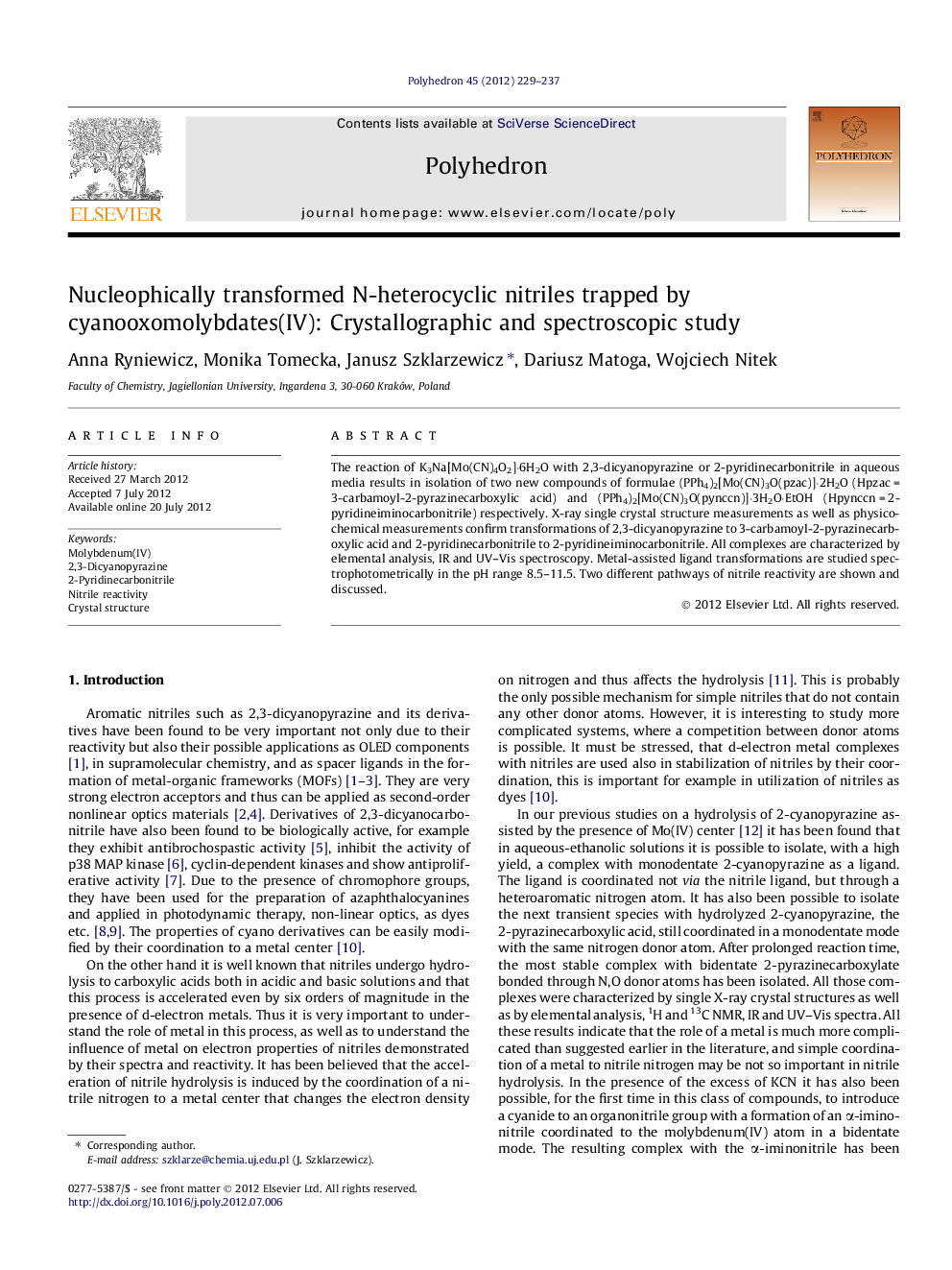| Article ID | Journal | Published Year | Pages | File Type |
|---|---|---|---|---|
| 1337303 | Polyhedron | 2012 | 9 Pages |
The reaction of K3Na[Mo(CN)4O2]·6H2O with 2,3-dicyanopyrazine or 2-pyridinecarbonitrile in aqueous media results in isolation of two new compounds of formulae (PPh4)2[Mo(CN)3O(pzac)]·2H2O (Hpzac = 3-carbamoyl-2-pyrazinecarboxylic acid) and (PPh4)2[Mo(CN)3O(pynccn)]·3H2O·EtOH (Hpynccn = 2-pyridineiminocarbonitrile) respectively. X-ray single crystal structure measurements as well as physicochemical measurements confirm transformations of 2,3-dicyanopyrazine to 3-carbamoyl-2-pyrazinecarboxylic acid and 2-pyridinecarbonitrile to 2-pyridineiminocarbonitrile. All complexes are characterized by elemental analysis, IR and UV–Vis spectroscopy. Metal-assisted ligand transformations are studied spectrophotometrically in the pH range 8.5–11.5. Two different pathways of nitrile reactivity are shown and discussed.
Graphical abstractHydrolysis of 2,3-dicyanopyrazine in the presence of tetracyanooxomolybdate(IV) leads to a catalytical formation of 3-carbamoyl-2-pyrazinecarboxylic acid. When 2-pyridinecarbonitrile is used, the attack of complex cyanide on the nitrile carbon atom results in a stoichiometric formation of 2-pyridineiminocarbonitrile. X-ray crystal structures of captured complexes with the transformed nitriles are presented and discussed together with spectral changes accompanying reactions at various pH values.Figure optionsDownload full-size imageDownload as PowerPoint slideHighlights► Hydrolysis of nitriles in the presence of tetracyanooxomolybdate(IV) was studied. ► Hydrolysis of 2,3-dicyanopyrazine gave 3-carbamoyl-2-pyrazinecarboxylic acid. ► Hydrolysis of 2-pyridinecarbonitrile gave 2-pyridineiminocarbonitrile. ► X-ray crystal structures of complexes with the transformed nitriles are presented. ► Two different pathways of nitrile reactivity are proposed and discussed.
